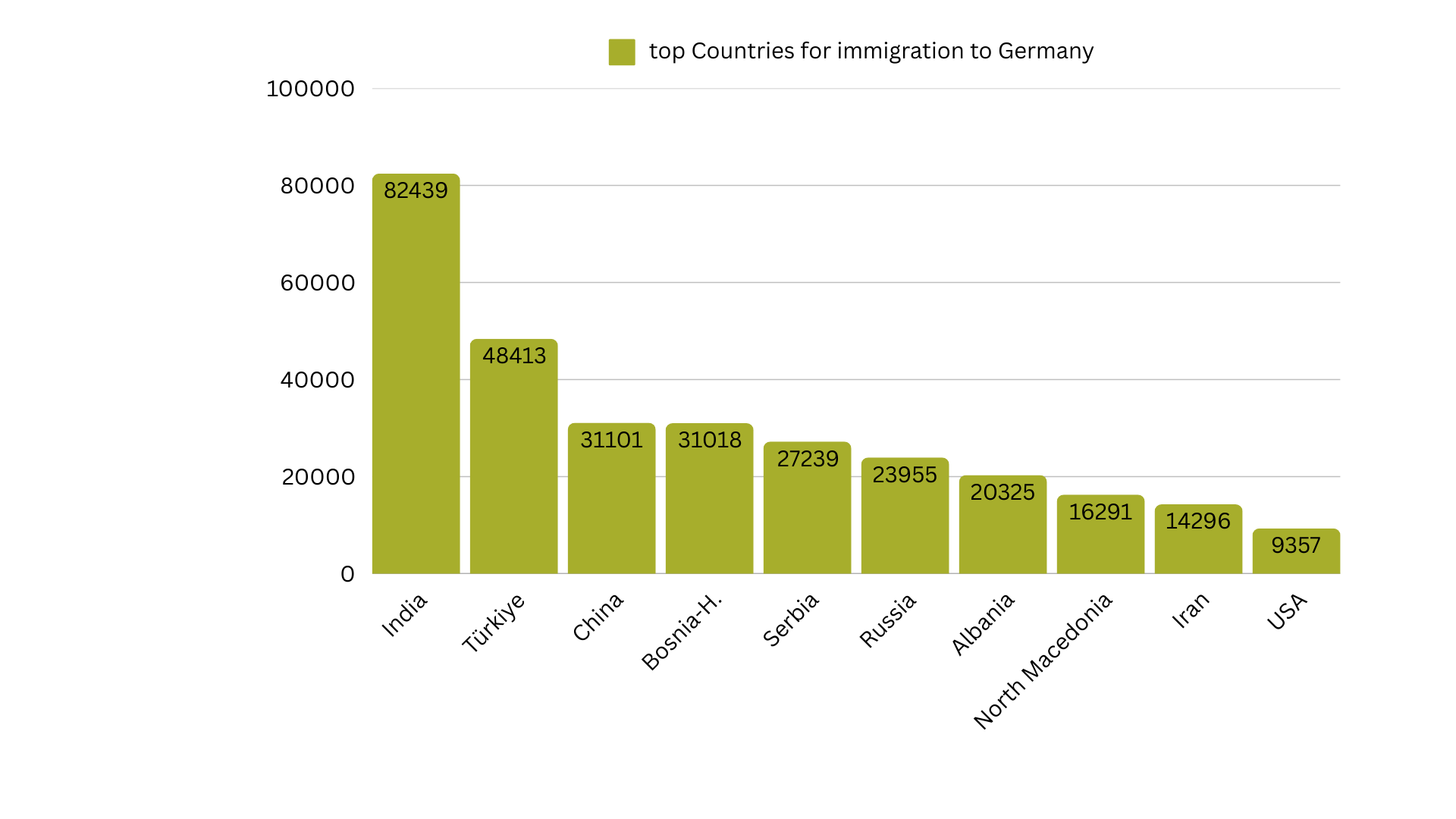Top 10 immigration countries to Germany
In the last two years, the increase in employment subject to social insurance contributions has been almost exclusively due to immigration from third countries.
While there was an increase of over 336,000 positions in 2023, the increase in 2024 was only 72,000 positions.
This can also be clearly seen in the number of cases in labor migration. Current data on the legislative procedures for skilled immigration are provided by the federal government’s answers to a small request from the FDP parliamentary group. (BT-Drs. 20/14597 – https://dserver.bundestag.de/btd/20/145/2014597.pdf).
The federal government announced that as of November 30, 2024, according to the Central Register of Foreigners (AZR), there were 553,530 people in Germany who had a residence permit under Chapter 2 Section 4 of the Residence Act (AufenthG) on the reference date.
The numbers below are added up (some smaller numbers such as Section 18f Paragraph 1 of the Residence Act; mobile researchers) and are not taken into account.

- The top 3 places are occupied by skilled workers from India (82,493), Turkey (48,431) and China (31,101)
- Almost all of the Western Balkan states are among the top ten
- Iran (14,296) is also among the top 10 in ninth place with 6,049 cases based on Section 18b Paragraph 1 of the Residence Act in its version from March 1, 2020 and until November 17, 2023
- The USA ranks tenth with a total of 9,357 cases (not even half as many as from the Russian Federation)
If you look at the number of cases in detail, the following points are striking
- The increase in the number of Blue Cards has almost halved from 2023 to 2024, from +30,000 to +18,600
- The number of cases under Section 19 c Paragraph 1, other Employment purposes (e.g. intergovernmental agreement) have almost completely collapsed in 2024 (2023 +21,392, 2024 +5,576)

The Institute for Employment Research (IAB) has calculated that with a net immigration of 400,000 people per year into the German labor market, the labor force potential would remain stable until 2035. This is assuming that the labor force potential is expected to fall by 7.2 million from the current 47.4 million people by 2035 for demographic reasons.
If you look at the figures above, we are miles away from that. We will not solve the demographic challenge through labor migration alone, but there is still a lot of room for improvement.
An example: the so-called 2+2 rule for experienced professionals (employment in Germany according to Section 19c Paragraph 2 of the Residence Act in conjunction with Section 6 of the Employment Ordinance) requires a salary of 43,470 euros (in 2025). According to the Federal Employment Agency’s wage atlas, the median salary for an electrician in Germany is 42,804 euros/year, but the actual wage is likely to be lower at an average of 15 euros/hour.
This wage hurdle is simply too high… The 1,716 cases in this category speak volumes…














